With its huge back plates, long tail spikes and teeny tiny head, Stegosaurus is one of the most distinctive dinosaurs we know about. Comparable in size to the largest animals we share the Earth with today, this plodding herbivore has captured imaginations 150 million years after the species died out.
The remains of 80 of these animals have been unearthed around the world, from the United States to Portugal, including one acquired by the Natural History Museum in London in 2014. One of the most complete fossils of any dinosaur ever found, its discovery led to renewed study and greater understanding of this gentle giant.
"Although they are iconic, stegosaurs are quite poorly-known as fossils," says Dr Susannah Maidment, a palaeontologist at the museum. "Before [the NHM] specimen was discovered, we didn’t have a specimen that preserved all of the plates and spines in the correct place along the back, so we didn’t know how many there were. We didn’t even know how many vertebrae there were in the back or tail – so we could really only guess how long stegosaurs were."
There are three recognised species of Stegosaurus –S. stenops,S. ungulatusandS. sulcatus – although related stegosaurs include Kentrosaurus and Chungkingosaurus, which also had plates along their backs. Maidment believes that as well as its distinctive appearance, Stegosaurus is a rock star species because of where and when it was found: the Upper Jurassic of the western USA.
"The dinosaurs from this area are some of the most iconic and well-known, and include taxa like Diplodocus, Allosaurus, Brontosaurus and most of the ones you could name when you were seven years old.
"They were discovered at a time of intense research and discovery in the West known as the Bone Wars, when two competing palaeontologists, Othniel Charles Marsh and Edward Drinker Cope were racing against each other to discover as many new dinosaurs as possible. Their discoveries were well publicised at the time and captured the imagination of the general public."
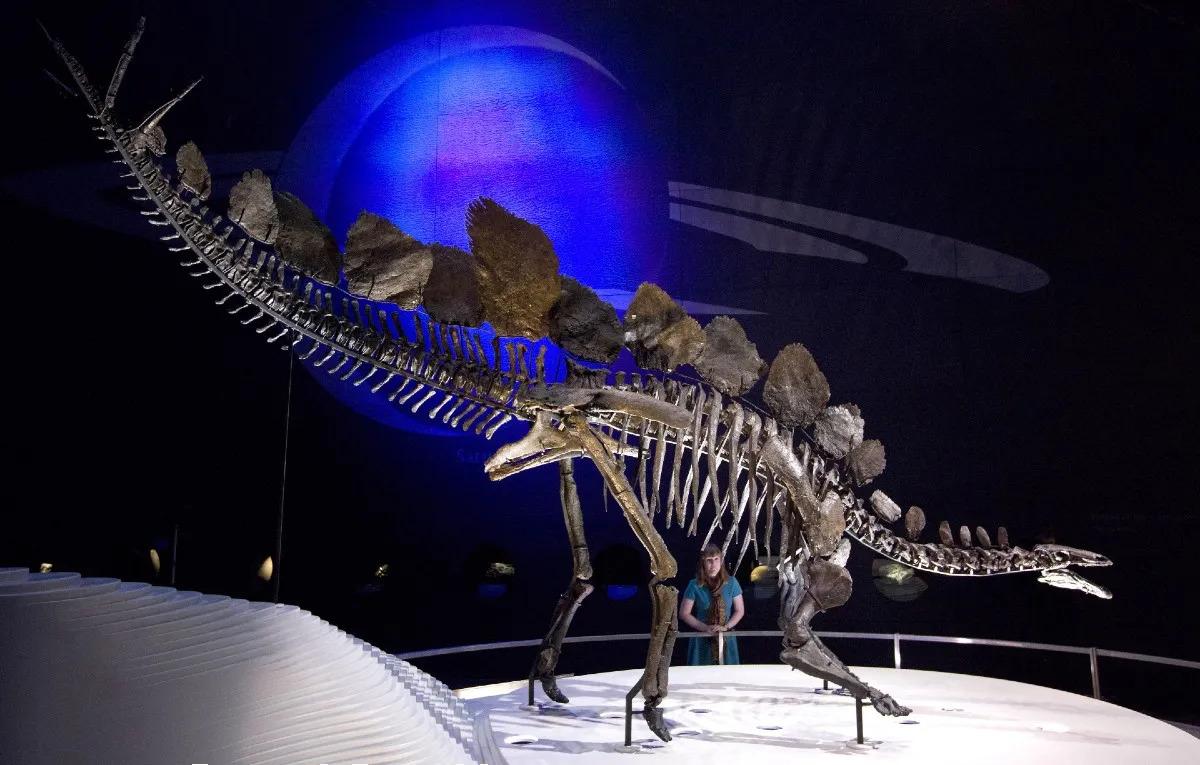
Stegosaurus skeleton
Stegosaurus measured around 9m from nose to tail, making it something of a middleweight creature in the grand age of the dinosaurs. In its own period, the late Jurassic, Stegosaurus was a relative minnow, sharing the planet with giant sauropods like Diplodocus and large predators like Allosaurus. Weighing up to 7 metric tons, its mass was similar to that of a large elephant.
Its famous back plates are the giveaway but there are a number of interesting features of the Stegosaurus skeleton. It had a long arched spine and front limbs that were much shorter than its hind limbs. This probably meant that the animal's tail was held high in the air, while its head pointed low to the ground – handy for eating ground-level shrubs.
Given its stocky build, Stegosaurus had a tiny head, one of the smallest known relative to the size of its body. Its braincase was around the same size as a dog's and you could probably hold its brain in one hand. Researchers believe its small brain meant that complex behaviours were unlikely.
Read more about dinosaur species:
- Triceratops: A mighty guide to a mighty beast
- The scary truth about theVelociraptor
- Why Tyrannosaurus Rex was a picky eater
"It wasn’t particularly bright," Maidment says. "Some dinosaurs have very well developed areas of the brain that indicate excellent sight or smell, but stegosaurs don’t really seem to have those. But those things are probably more important for predators than herbivores. They were obviously smart enough to do what was needed."
Arguably, there was more going on at the other end of its body. Toward the tip of its tail, Stegosaurus boasted two rows of long, sharp spikes, believed to be a useful defensive weapon against the predators that hunted it, including Allosaurus. (One Allosaurus specimen was found with a punctured tail into which a tail spike fits perfectly.)
Other theories have suggested that the spikes were more for display because plates on a Stegosaurus tail would have limited its movement.
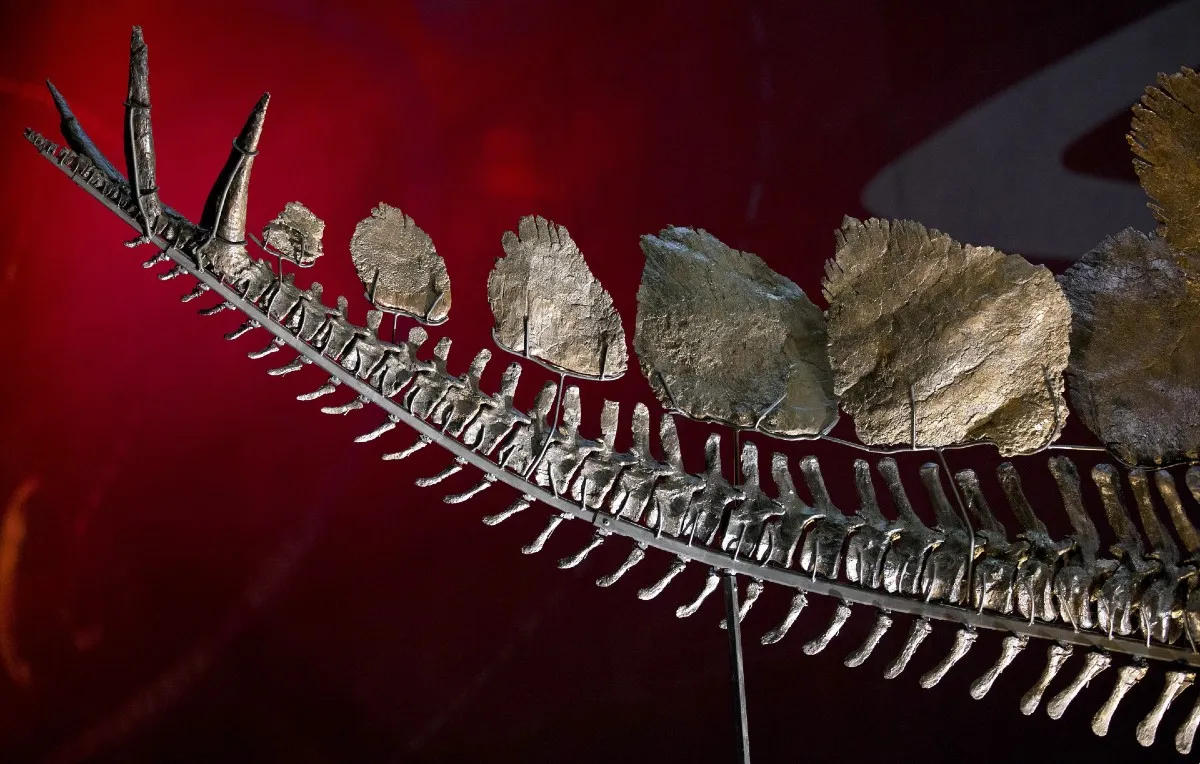
Stegosaurus plates
Stegosaurus is known for the two rows of pointed plates that line its back and tail. Palaeontologists are still debating what these features were actually used for. They were embedded in the animal's skin as opposed to being attached to its skeleton, so they may have been more useful in warding predators off than offering a robust defence against sharp teeth and claws.
Other possibilities include species recognition and heat regulation. Different stegosaur species may have had slightly different plate configurations, and fossils also show the plates had thin grooves that probably contained blood vessels. The amount of blood that passed through them may have determined how the animal stayed warm or cooled down.
"Personally, I think it’s unlikely that’s why they evolved, because not all stegosaurs have the very big flat plates that Stegosaurushas," Maidment says. "Some have smaller, more spiky plates."
As with so much in palaeontology, there has to be a certain amount of educated guesswork based on the specimens available. "There are lots of ideas, but they are really hard to test, so we don’t really know," says Maidment. "Different species of stegosaur – they are known from all over the world, from the Middle Jurassic to the Early Cretaceous – have different shapes and sizes of plates and spines, and it appears that different species of stegosaur were living alongside each other in the same ecosystems. So it’s possible they were used for interspecific recognition – so that they could recognise members of the same species."
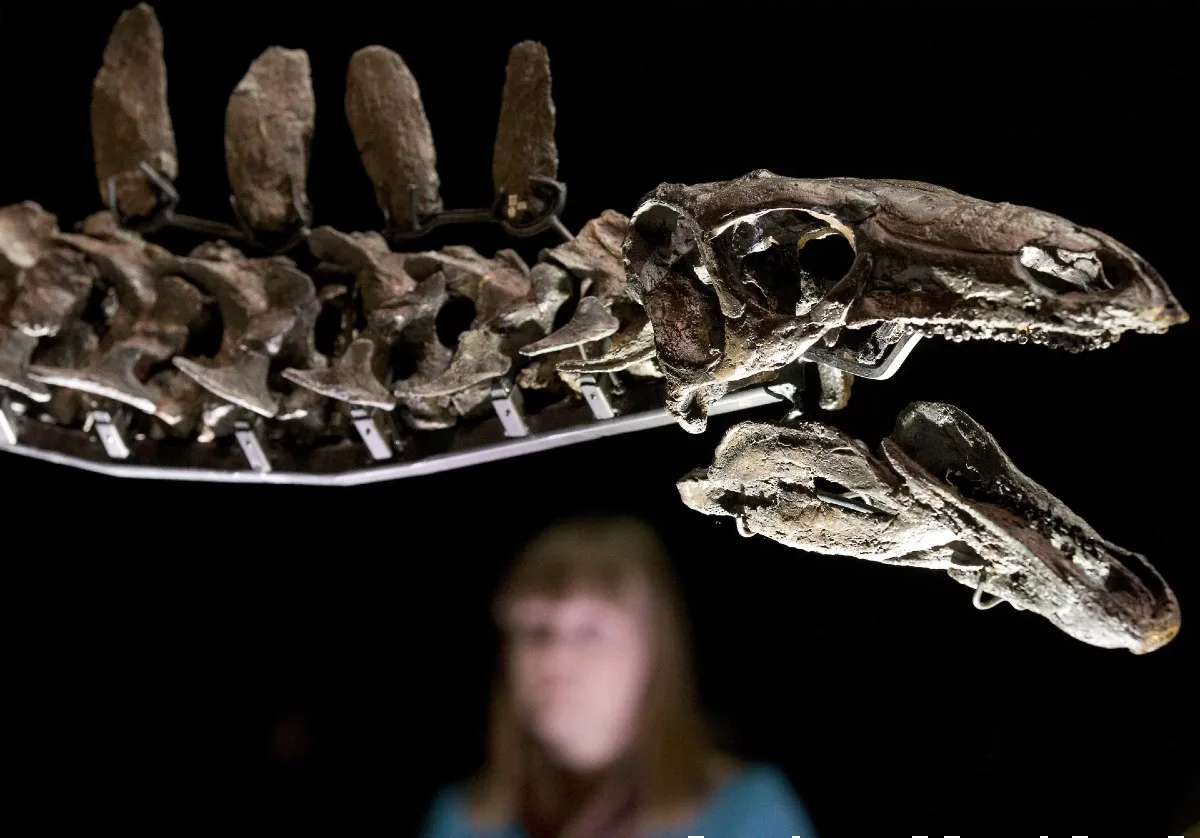
What did Stegosaurus eat?
Plants, and lots of them. This heavy-set herbivore was well adapted to graze on shrubs, ferns, moss and other greens that grew around a metre off the ground. It had no front teeth, but instead used a beak to tear off leaves, while a small number of teeth lined its cheeks. Palaeontologists believe it may have swallowed stones, like some species do today, to help with digestion.
One open question, given how small its head was compared with the rest of the body, is how Stegosaurus managed to fuel that massive body through its (relatively) tiny mouth.
The specimen at London's Natural History Museum is the only one that preserves a complete but disarticulated skull. "All the bones are separate, allowing us to reconstruct the head in more detail than was possible before," Maidment says. "The specimen has allowed us to not only answer basic questions about the anatomy of stegosaurs, but also how much they weighed and their bite force, which has helped us understand that despite their tiny teeth, they seem to have been able to bite small twigs, and had a bite force similar to a sheep."
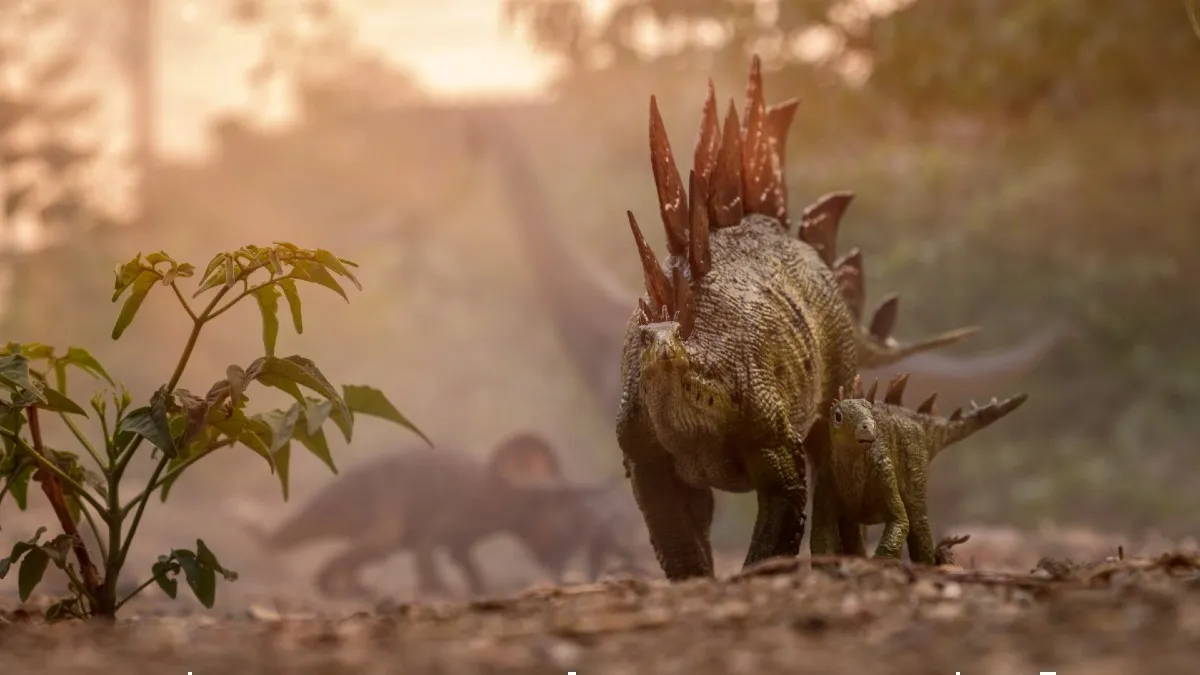
When did Stegosaurus live?
Between 145-155 million years ago, in the Jurassic period. Fossils have mainly been found in the northern hemisphere and it's thought that Stegosaurus roamed a flat, semi-arid environment marked by distinct seasons. It would have been overshadowed by the giant sauropods that ruled the Earth at that time, such as Brachiosaurus and Diplodocus, while predators such as Allosaurus were probably its chief source of peril.
"We don’t have much insight into their lifestyles," Maidment says. "Did they live in herds? We don’t know. What were their nests like and did they look after their young? There are no known stegosaur nests or eggs, and only one very partial skeleton of a juvenile. There are no hatchlings, so we don’t know if the babies had plates, for example."
Other armoured dinosaurs
Ankylosaurus
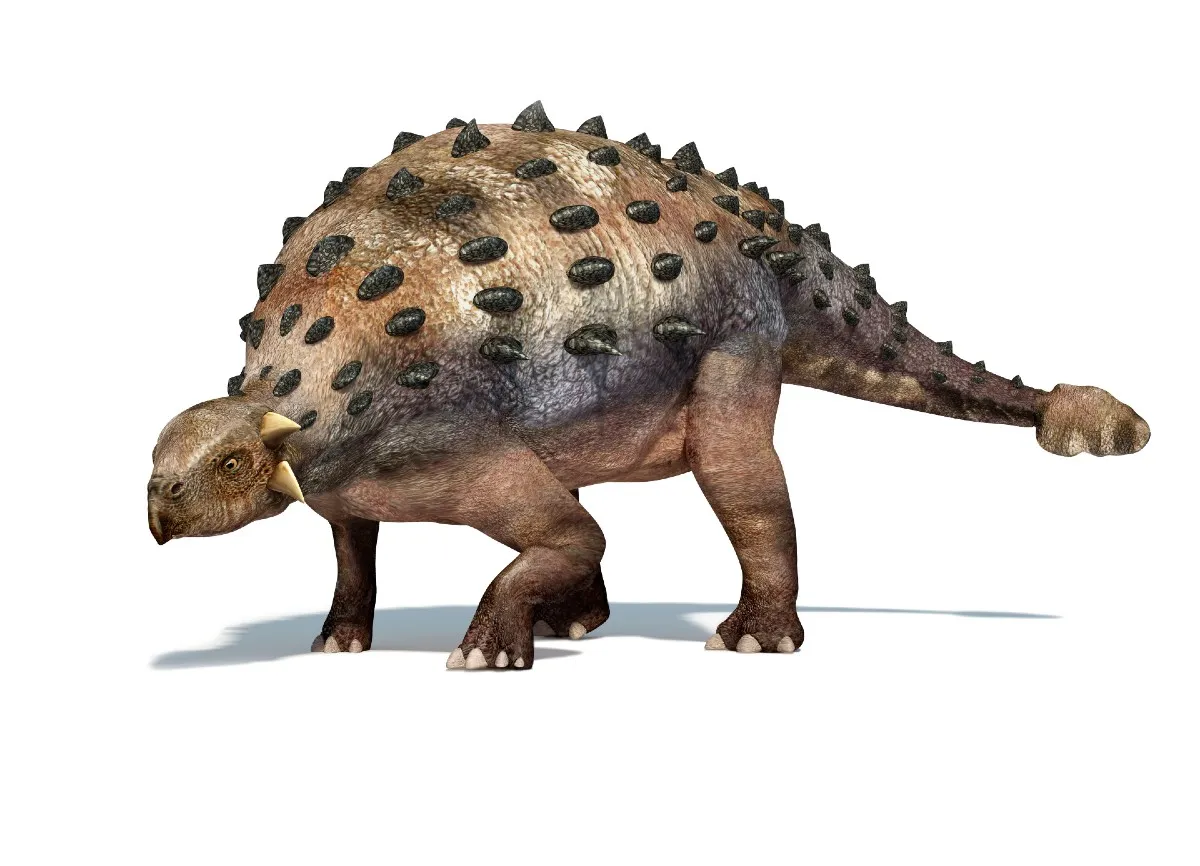
Built like a small tank, Ankylosaurus had heavy armour on its head and back and a clubbed tail that it swung like a wrecking ball. One of the largest dinosaurs of its kind, it was wide and squat, with a beak-like mouth that ground its food and a large gut where those greens would be slowly digested.
Gastonia
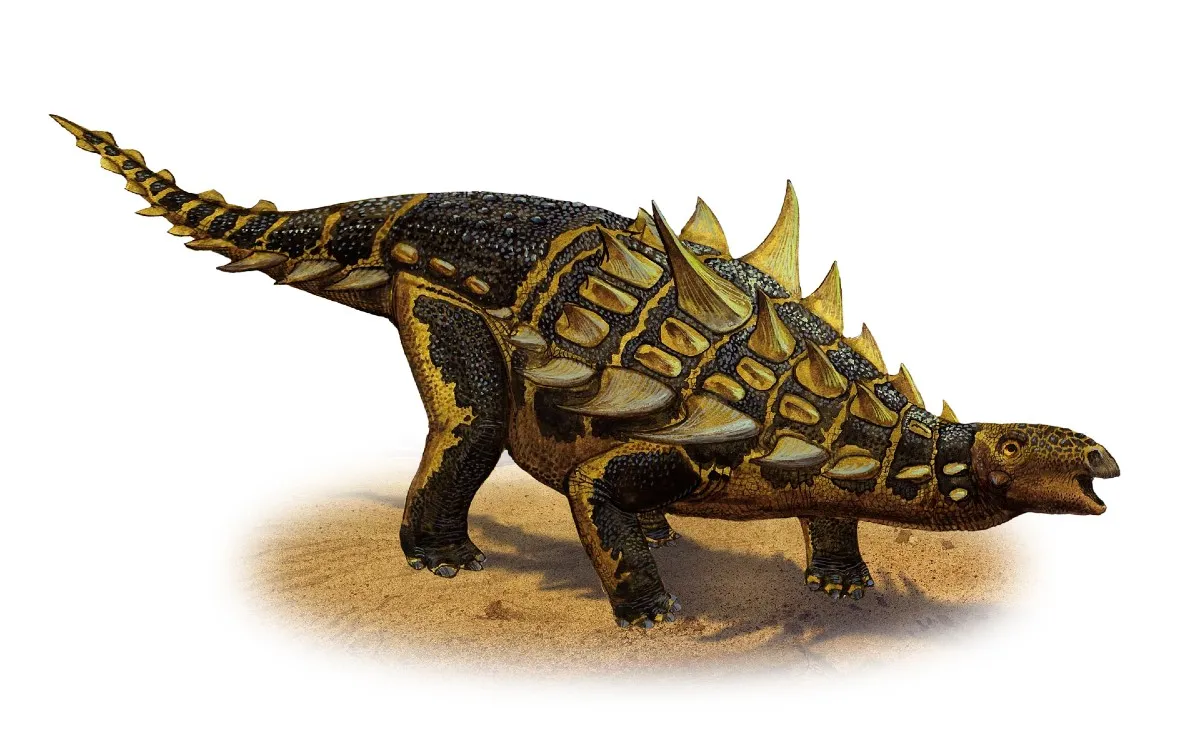
Another ankylosaurid herbivore, this one looked like a medieval weapon with spikes along its back and huge ones protruding from its shoulders. Armoured dinosaurs rarely looked so well-protected.
Chungkingosaurus
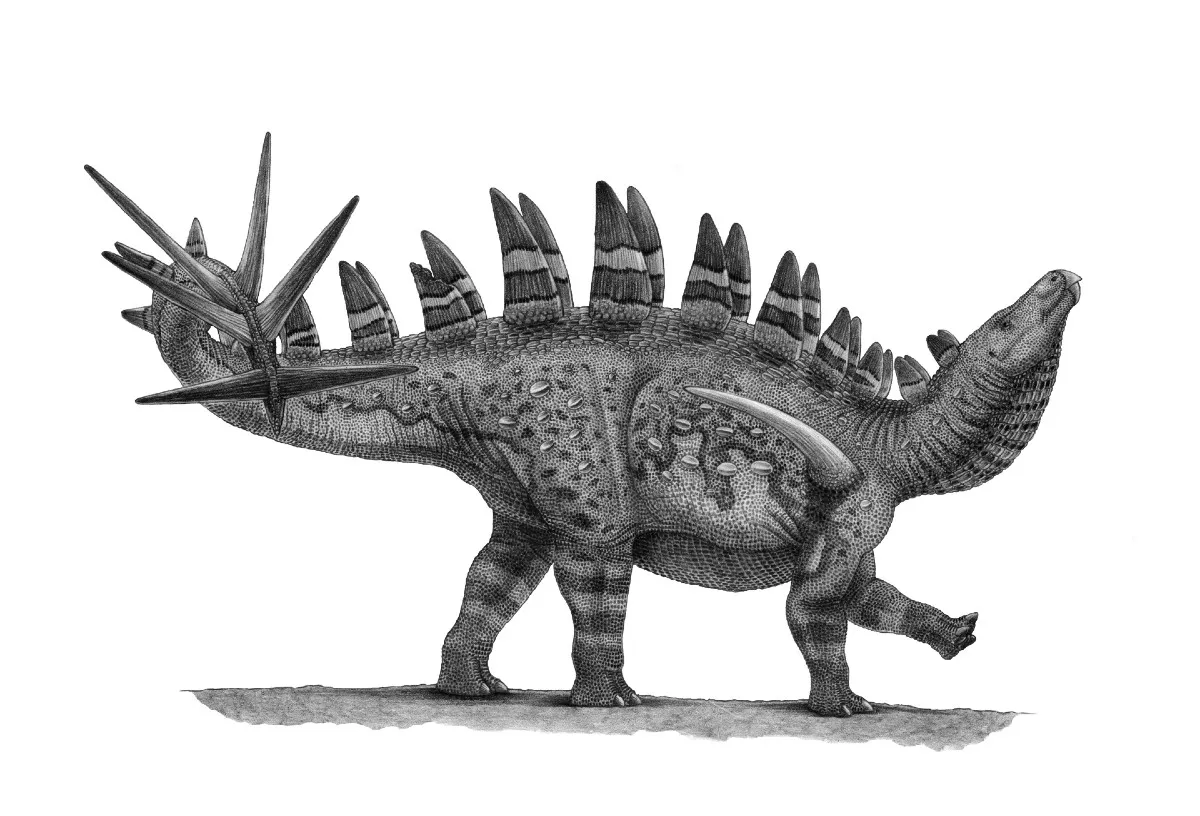
This relatively small but fearsome-looking stegosaur was discovered in China in the 1970s. A small number of specimens have been found, and some palaeontologists have even suggested these were juveniles of another species.
Euoplocephalus
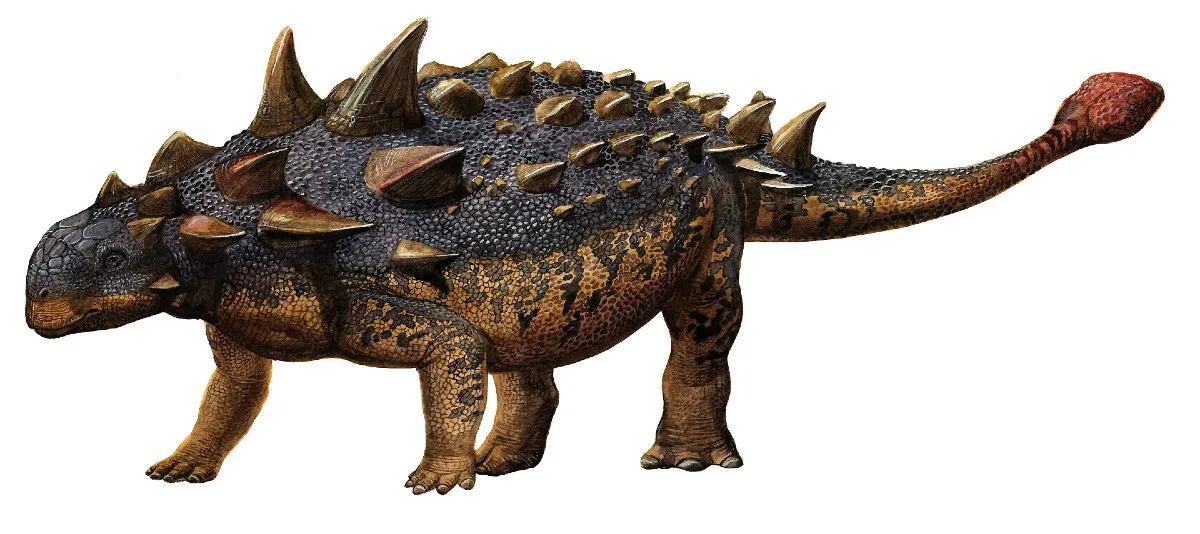
Another bony ankylosaurid, this species was a little smaller than Ankylosaurus, but among its distinguishing features were bones just above its eyes, which may have been used as bony eyelids.
Kentrosaurus
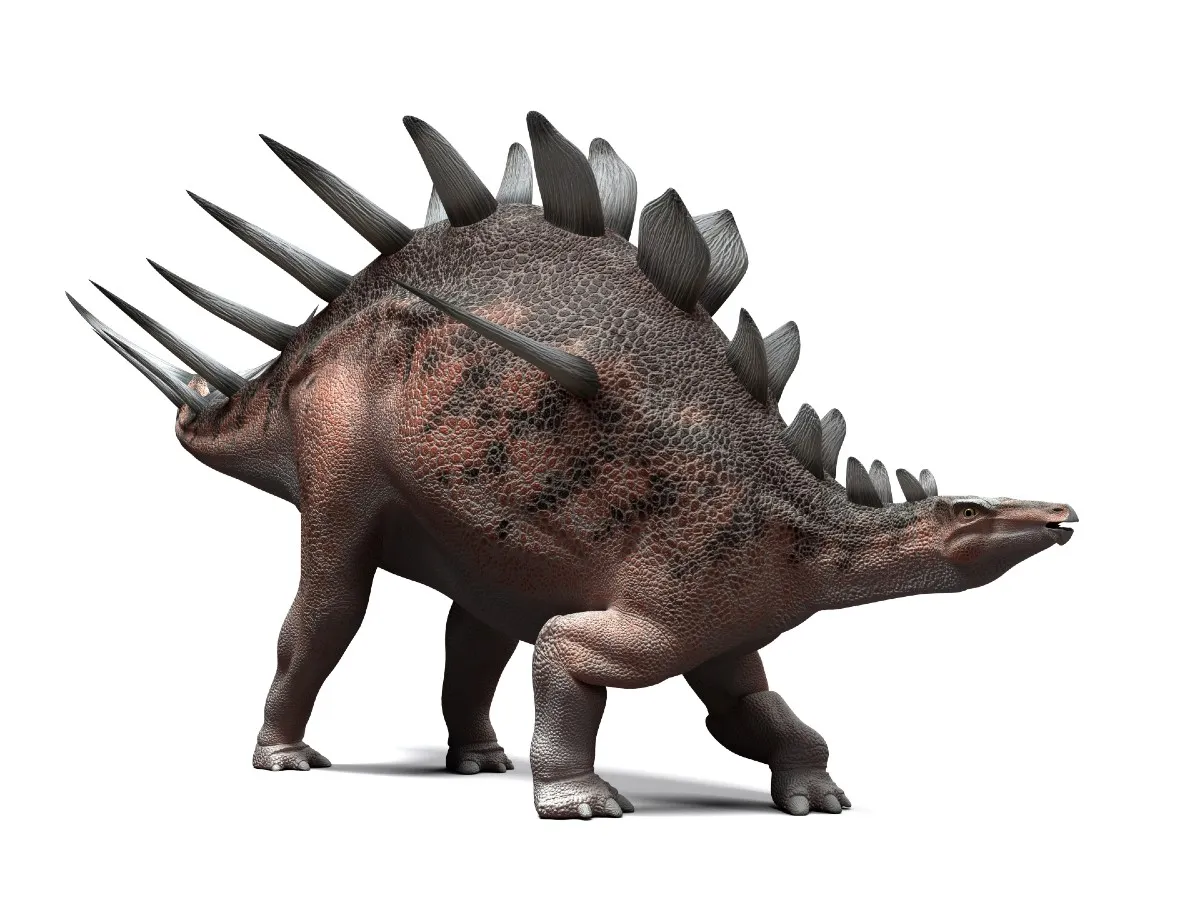
A stegosaur with more spikes than plates, this dramatic-looking creature looks like something dreamt up by a computer game designer. Like other animals of its kind, however, it was a herbivore, and a small one at that.
About our expert, Dr Susannah Maidment
A palaeontologist at London's Natural History Museum, Dr Susannah Maidment is an expert in the anatomy, taxonomy and evolution of a large variety of dinosaurs. She also edits a number of palaeology journals.
Learn more about dinosaurs:
